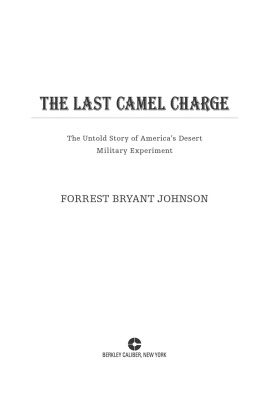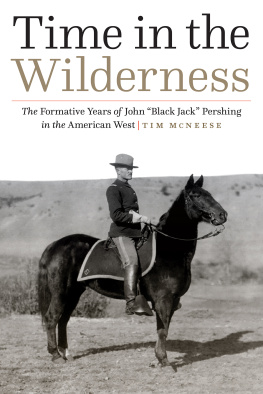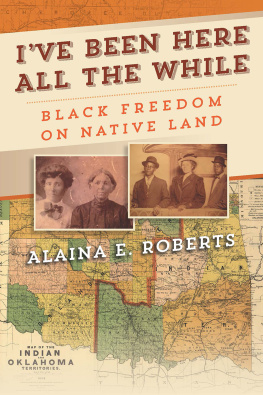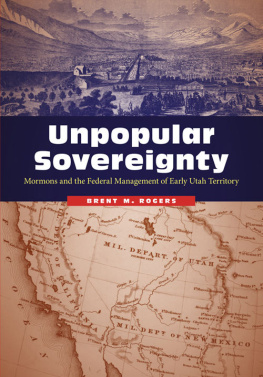Most Berkley Caliber Books are available at special quantity discounts for bulk purchases for sales promotions, premiums, fund-raising, or educational use. Special books, or book excerpts, can also be created to fit specific needs.
For details, write: Special Markets, The Berkley Publishing Group, 375 Hudson Street, New York, New York 10014.
THE LAST CAMEL CHARGE

The Untold Story of Americas Desert
Military Experiment
FORREST BRYANT JOHNSON

BERKLEY CALIBER, NEW YORK
THE BERKLEY PUBLISHING GROUP
Published by the Penguin Group
Penguin Group (USA) Inc.
375 Hudson Street, New York, New York 10014, USA
Penguin Group (Canada), 90 Eglinton Avenue East, Suite 700, Toronto, Ontario M4P 2Y3, Canada (a division of Pearson Penguin Canada Inc.) Penguin Books Ltd., 80 Strand, London WC2R 0RL, England Penguin Group Ireland, 25 St. Stephens Green, Dublin 2, Ireland (a division of Penguin Books Ltd.) Penguin Group (Australia), 250 Camberwell Road, Camberwell, Victoria 3124, Australia (a division of Pearson Australia Group Pty. Ltd.) Penguin Books India Pvt. Ltd., 11 Community Centre, Panchsheel Park, New Delhi110 017, India Penguin Group (NZ), 67 Apollo Drive, Rosedale, Auckland 0632, New Zealand (a division of Pearson New Zealand Ltd.) Penguin Books (South Africa) (Pty.) Ltd., 24 Sturdee Avenue, Rosebank, Johannesburg 2196, South Africa
Penguin Books Ltd., Registered Offices: 80 Strand, London WC2R 0RL, England
This book is an original publication of the Berkley Publishing Group.
The publisher does not have any control over and does not assume any responsibility for author or
third-party websites or their content.
Copyright 2012 by Forrest Bryant Johnson
Book design by Laura K. Corless
All rights reserved.
No part of this book may be reproduced, scanned, or distributed in any printed or
electronic form without permission. Please do not participate in or encourage piracy of
copyrighted materials in violation of the authors rights. Purchase only authorized editions.
BERKLEY CALIBER and its logo are trademarks of Penguin Group (USA) Inc.
FIRST EDITION : April 2012
Library of Congress Cataloging-in-Publication Data
Johnson, F. B.
The last camel charge : the untold story of Americas desert military experiment / Forrest Bryant Johnson.
p. cm.
ISBN: 978-1-101-56160-7
1. United States. Army. Camel CorpsHistory. 2. CamelsSouthwest, NewHistory19th century. 3. Southwest, NewHistory1848 I. Title.
UC350.J64 2012
357dc23
2011038454
PRINTED IN THE UNITED STATES OF AMERICA
10 9 8 7 6 5 4 3 2 1
ALWAYS LEARNING
PEARSON
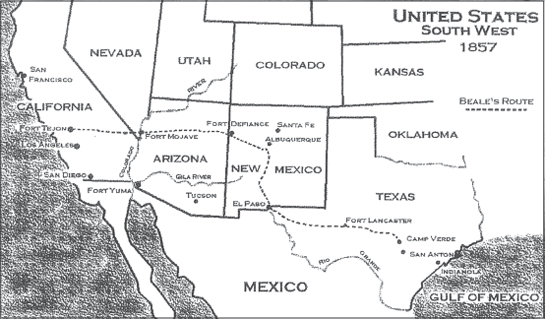
Edward Beales Route (dotted line)
COURTESY OF MASTER SERGEANT ED HINES, USMC ( RET. )
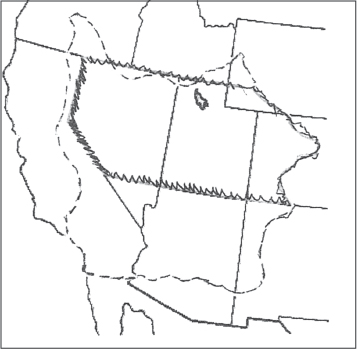
Utah Territory and the Mormons proposed state.
COURTESY OF MASTER SERGEANT ED HINES, USMC ( RET. )
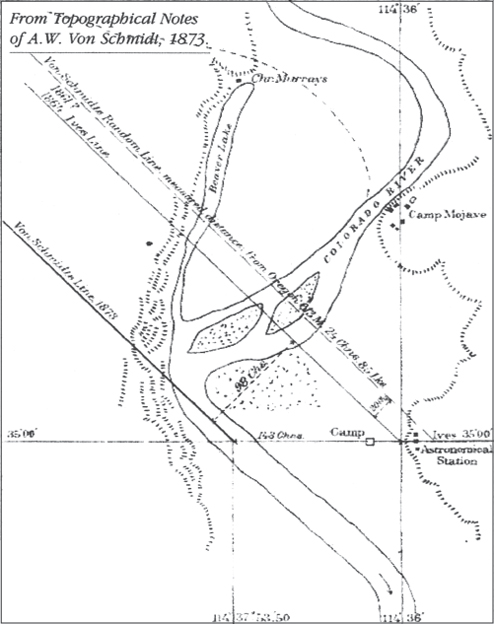
1873 map shows the location of Beaver Lake in what is now
Nevada. Beales Trail (the Mojave Trail) is indicated by a dotted
line at the northern edge of the lake. From the Topographical
Notes of A. W. Von Schmidt.
U.S. ARCHIVES

Death Valley location
COURTESY OF MASTER SERGEANT ED HINES, USMC ( RET. )
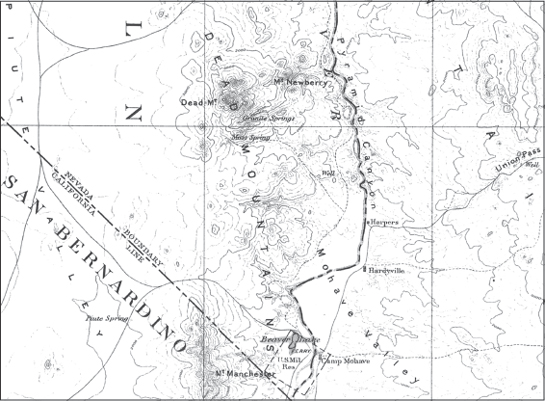
Beaver Lake. 1892 map of Camp Mojave. Beales Trail indicated
by a line parallel to the Colorado River (Pyramid Canyon)
proceeding from Hardyville (now Bullhead City, Arizona, area),
crossing at Camp Mojave, passing above Beaver Lake.
Topography H. M. Wilson, 1892; from 1884 work by Henry
Gannen and the 1876 Powell Survey.
SOUTHWEST MUSEUM, KINGMAN, ARIZONA
It takes much to bring down a charging camel!
Lieutenant Colonel T. E. Lawrence (of Arabia)
INTRODUCTION
The story began for me years ago on a hot August afternoon as I drove from Las Vegas to Laughlin, Nevada. South of the old mining town of Searchlight, I turned onto Highway 163, which corkscrews its way down a steep hill to the Colorado River. A lonely, weathered historical marker caught my attention and I pulled off the road to learn what could have occurred of importance in that barren part of the Mojave Desert.
A blast of hot, dry air greeted me as I stepped from the car. My eyes squinted in the brilliant sun that baked the black, rocky landscape around me.
The Camel Corps, the marker said. I read on, learning that a Lieutenant Edward F. Beale surveyed a wagon road through New Mexico, Arizona, and Nevada while testing the fitness of camels. They crossed the Colorado River near this spot in 1857.
Camels in Nevada? Edward Beale was a naval officer, a hero of the Mexican War. What was a navy man doing in the middle of the Mojave Desert? Where did he get the camels?
I spoke with a local historian who assured me that camels did pass through the Southwest in the mid-1800s and he told of a battle between Indians and men riding camels at Beaver Lake in southern Nevada.
Fascinated, I scanned a Nevada highway map but found no Beaver Lake. Had it been a mirage, a figment of someones imagination? A navy officer leading an expedition through a desert, men riding camels and fighting Indians, a lake that did not exist; I doubted the story.
Some years later, as I admired a friends tattered 1873 map of Nevada, I made an interesting discovery. There was Beaver Lake! It appeared as an oblong spot on the map next to the Colorado River at the southern tip of the state.
So, Edward Beale and the lake did exist. But what was the truth about the camels?
To completely understand the camel story, it is necessary to connect a chain of historical events that form like a picture puzzle. Each link is, in itself, a story of the involvement of brave, dedicated Americans from many ethnic backgrounds, working together in a harsh, dangerous environment to accomplish a mission.
Soon a Civil War would split the country apart. But violence had already infected parts of the United States. Whites were killing one another in Kansas over the slavery issue, Indians and emigrants were fighting in the West, and the United States and the Mormons in Utah Territory were on the brink of total war.
To protect our citizens on the frontier, the army needed a new weapon, something stronger than mules to carry supplies and faster than horses for the cavalry.
For a few years, camels imported by the army played a vital role in the history of the American West. Then, as if in a final charge, the adventure came to an abrupt end.

